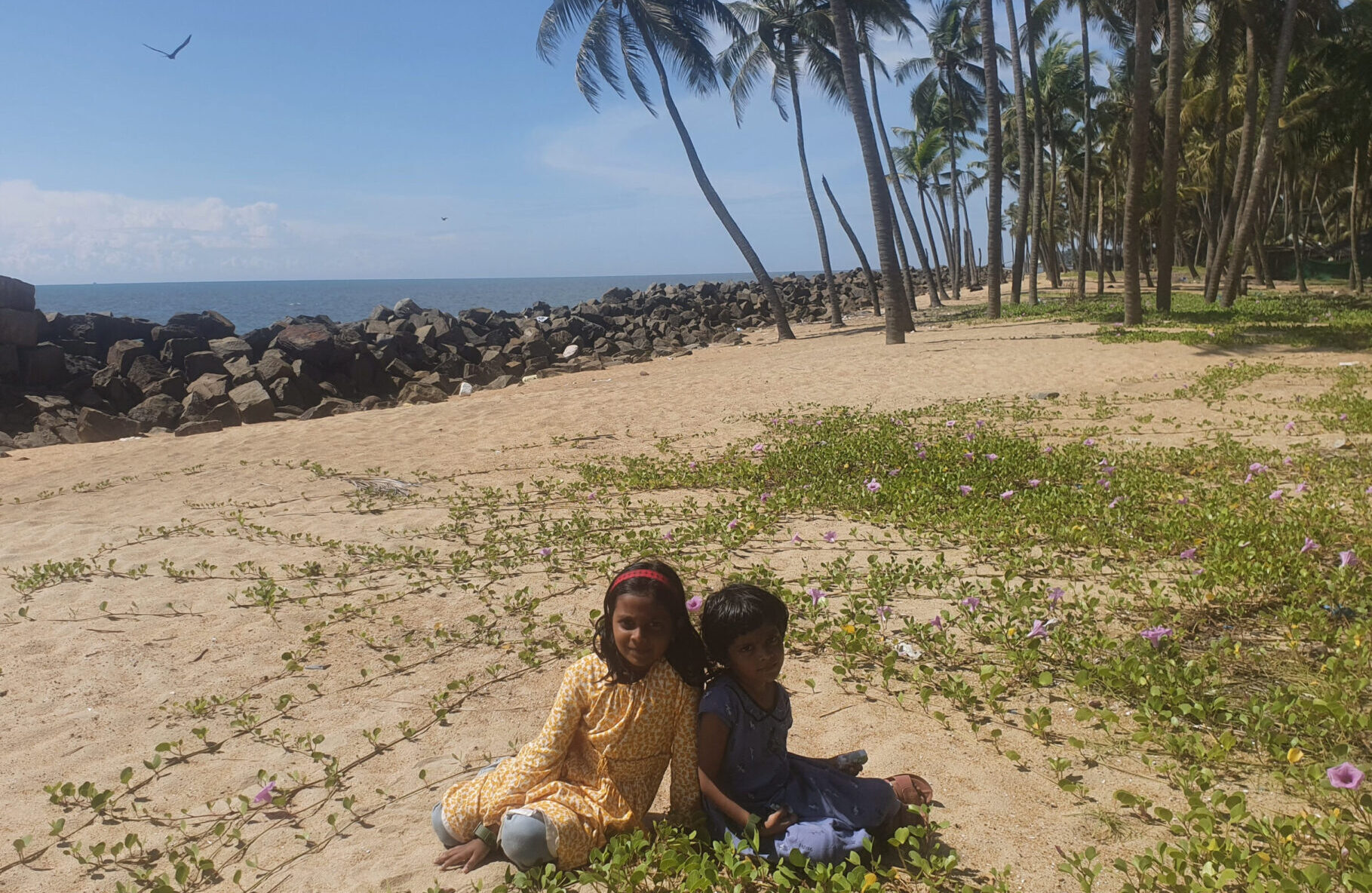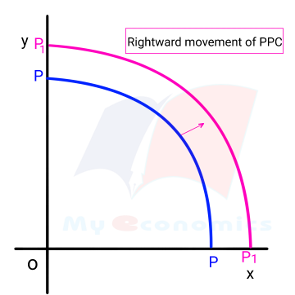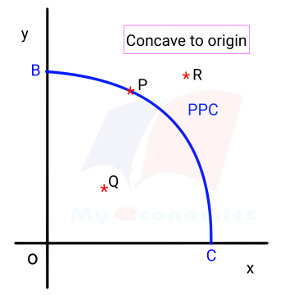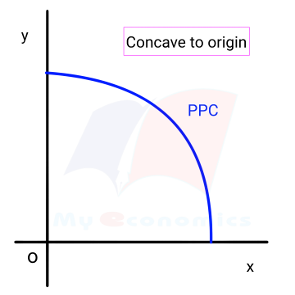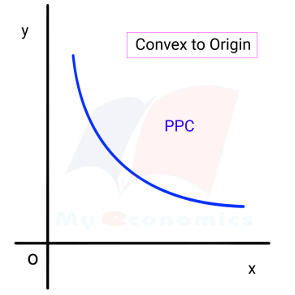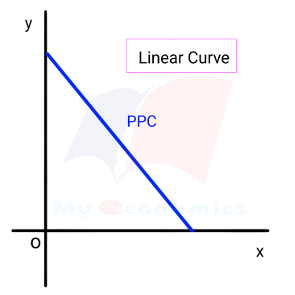Chapter 1 – Introduction to Micro Economics.
Questions and answers
Answer
When there is a growth of resources, then it will lead the PPC to move rightwards. This is shown in the above picture. PPC moves from PP to P1P1 as a result of the growth of resources.
Answer
Arguments in Favour of :-
- Gives more employment opportunities
- Only less capital is required in production
- Less technical skill is required
Arguments against:-
- This method is less efficient than capital intensive technique
- This will cause slow development
- This method leads economy to a less productive
Answer
- Point P indicates fuller utilisation of the economy’s resources.
- Point Q indicates underutilisation of resources.
- Point R indicates the need for the growth of resoureces or it is an unattainable combination.
| A | B | C |
|---|---|---|
| Paul A Samuelson | Welfare Economist | Wealth of Nations |
| Adam Smith | Scarcity | Principles of Economics |
| Alfred Marshall | Wealth Definition | Economics |
| Lionel Robins | Growth Definition | An Essay on the Nature and Significance of Economics |
| A | B | C |
|---|---|---|
| Paul A Samuelson | Growth | Economics |
| Adam Smith | Wealth Definition | Wealth of Nations |
| Alfred Marshall | Welfare Economist | Principles of Economics |
| Lionel Robins | Scarcity | An Essay on the Nature and Significance of Economics |
General price level, Aggregate consumption, Rent for a house, Demand for an apple, Trade cycles, Cost of production, Theory of welfare, Theory of growth.
Answer
| Micro Economics | Macro Economics |
|---|---|
| Rent for a house | General price level |
| Demand for an apple | Aggregate consumption |
| Cost of production | Trade cycles |
| Theory of welfare | Theory of growth |
Answer
The cost of forgone alternatives is called opportunity cost. Example. Instead of buying watch, I bought a book of ₹200 yesterday.
Answer
Traditionally the subject matter of Economics has been studied under two branches Micro economics and Macroeconomics. Microeconomics is the branch of economics has been studied the problem of an individual unit of an economy. Micro economics is the another branch of economics, which studies the problems at the level of an economy as a whole.
- Centrally Planned Economy.
- Market Economy.
Answer
In a centrally planned economy, the government o r the central authority plans all the important activities in the economy. All important decisions regarding production, exchange and consumption of goods and services are made by the government. On the other hand in a market economy, all the important decisions are made on the other basis of demand and supply conditions. The central problems regarding what and how much to produce are solved through the coordination of economic activities brought about by the price signals.
Answer
Production Possibility Frontier is defined as a curve, which shows the various combinations of two commodities that can be produced with given technology and the resources which are fully and efficiently utilised.
Answer
The positive economics deals with the question, “what is?” and normative economics deals with the question, “what ought to be?”. In positive economics, we study how the different mechanism functions and in normative economics, we try to understand whether these mechanism are desirable or not.
Price mechanism, welfare motive, profit motive, private sector, planning, public sector, competition, command economy.
Answer
| Capitalist Economy | Socialist Economy |
|---|---|
| Price Mechanism | Welfare motive |
| Private sector | Public sector |
| Profit motive | Planning |
| Competition | Command economy |
- What is the opportunity cost of increasing food production from OF1 to OF2 ?.
- If the economy produced output C. What does it indicates ?.
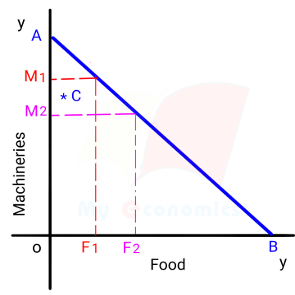
Answer
- In order to produce more units of a good, we have to sacrifice the production of another good. This sacrifice is known as opportunity cost. Here, while increasing the production of food from OF1 to OF2 is the M1 M2 unit of mechineries.
- If the production is on C , it means economy is not fully utilising its available resources AB.
Imports of a country, price of gold, exchange rate, National Savings, average revenue, income of the consumer, fiscal deficit marginal product.
Answer
| Micro Economoics | Macro Economics |
|---|---|
| Price of Gold | Imports of a country |
| Average Revenue | Exchange Rate |
| Income of the consumer | National savings |
| Marginal Product | Fiscal deficit |
Answer
We have scarce resources and there is a problem exist, what to produce? and in what quantity?. Thus, we are taking the help from the production possibility curve. It tells us how we can combine two goods that can be produced with the given resources on the assumptions.
| A | B | C |
|---|---|---|
| Concave to the origin | Centrally planned economy | Production possibility curve |
| Organisation of economic activities | Micro Economics | Macro Economics |
| Branches of economics | Increasing opportunity cost | Market economy |
| A | B | C |
|---|---|---|
| Concave to the origin | Increasing opportunity cost | Production possibility curve |
| Organisation of economic activities | Centrally planned economy | Market economy |
| Branches of economics | Micro Economics | Macro Economics |
Answer
The shape of PPC is determined by its slope, that is marginal opportunity cost. If MOC is increasing then shape of PPC will be concave to origin. Its shown in the below diagram.
If MOC is decreasing , then the shape of PPC will be convex to origin. It is shown in the below given graph.
If MOC is constant , then the shape of PPC will be linear. It is shown in the below given graph.
Answer
Microeconomics studies only parts of the economy and not the whole economy. Microeconomics a study of the individual prices of a product or a consumer or a producer. That is, microeconomics units. It is studies the theories of demand, production and cost, the theory of factor pricing, the theory of welfare and the price theory.
Macroeconomics is the study of the economy as a whole. It is also called aggregate economic units like national income, aggregate demand, aggregate supply, general price level, total employment etc.. comes under macroeconomics. Topics like monetary theory, trade cycles, theory of growth, Theory of Distribution and international trade are also come under macroeconomics.
Answer
| Production Possibilities | Cotton | Rubber | MOC |
|---|---|---|---|
| A | 0 | 500 | ___ |
| B | 5 | 400 | 500-400=100/5=20 |
| C | 10 | 300 | 400-300=100/5=20 |
| D | 15 | 200 | 300-200=100/5=20 |
| E | 20 | 100 | 200-100=100/5=20 |
| F | 25 | 0 | 100-0=100/5=20 |
Respected teacher and dear friends,
The topic of my seminar is “Central problems of an economy”. The paper is structured into 4 parts. The first part is Introduction. The second party is an explanation of the central problems. The third part explains about how different economic systems solve these problems. The last part concludes the paper.
1 Introduction.
Based on the nature of the economic system, economies can be broadly classified into capitalist economy, socialist economy and mixed economy. Whatever maybe the nature of the economy, all economies face some centre problems. The basic economic problem arises due to the mismatch between unlimited wants unlimited resources.
2. Explanation.
In the course of basic economic activities every society has to face scarcity of resources and that gives rise to the problems of choice. This problem involves taking decisions regarding what to produce and in what quantities?, how to produce and for whom to produce?. This can be explained below.
What to produce and in what quantities?
Every society wants thousands of goods and services. Since the resources are scarce, all these goods and services cannot be produced. The for the crucial decisions regarding what to produce has to be taken. Once this decision is taken, the next issue is to decide in what quantities, they are to be produced.
How to produce ?
Goods can be produced by using Different techniques. There are two types of techniques, Capital intensive technique (using more capital and less labour) and Labour intensive technique ( using more labour and less capital). The problem is that choice of techniques of production. The best technique is that which is most efficient. Efficiency is maximized by economizing scarce resources.
For whom to produce ?
It is related with the issue of distribution. Distribution involves division of the National Product among the four fighters of production such as Land, Labour , Capital and Organisation as Rent, Wage, Interest and Profit. This is called functional distribution. The question for whom to produce is decided by the purchasing power of the people.
3. How to solve this economic problems?
In a capitalist economy these problems are solved by capitalist with the help of price mechanism. In a socialist economy, these problems are solved by the planning authorities. In a mixed economy, the basic problems are solved through price and planning mechanism.
4.Conclusion.
Every economic system faces some Central economic problems fullstop every economy has to tackle the central problems full stop how these Central problems are tackled on the nature of the economic system.
![]()

